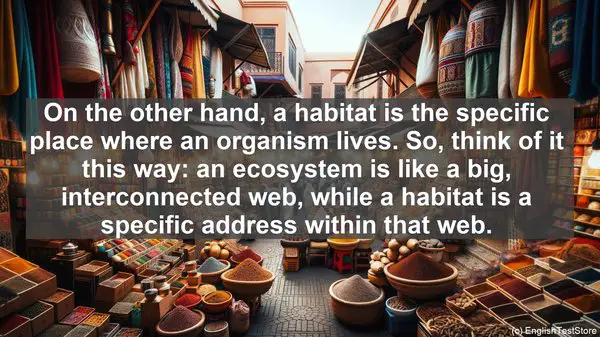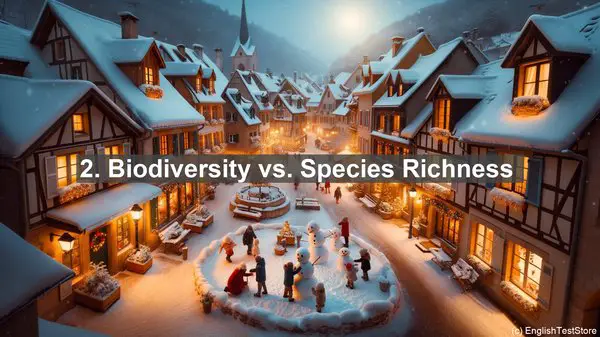Introduction
Today, we’re going to delve into the fascinating world of ecological engineering. But before we dive in, it’s crucial to have a solid grasp of the terminology. In this lesson, we’ll explore the top 10 commonly confused words in this field, ensuring you never mix them up again!
1. Ecosystem vs. Habitat
While these terms are related, they have distinct meanings. An ecosystem refers to the entire community of living organisms, along with their physical environment. On the other hand, a habitat is the specific place where an organism lives. So, think of it this way: an ecosystem is like a big, interconnected web, while a habitat is a specific address within that web.
2. Biodiversity vs. Species Richness
Biodiversity encompasses all forms of life in an ecosystem, including plants, animals, and microorganisms. It’s like a measure of the ecosystem’s overall variety. On the other hand, species richness focuses solely on the number of different species present. So, while biodiversity is about variety, species richness is about quantity.

3. Renewable vs. Non-renewable Resources
Renewable resources, like solar or wind energy, can be replenished naturally over time. They’re essentially unlimited. Non-renewable resources, such as fossil fuels, are finite and will eventually run out. So, when considering sustainability, it’s crucial to prioritize renewable resources.

4. Biodegradable vs. Non-biodegradable
Biodegradable materials, like food waste, can be broken down by natural processes into simpler compounds. Non-biodegradable materials, such as plastics, persist in the environment for a long time. When it comes to waste management, promoting biodegradable options is key.
5. Restoration vs. Rehabilitation
Both terms involve improving or repairing an ecosystem. However, restoration aims to bring the ecosystem back to its original state, while rehabilitation focuses on enhancing its functionality without necessarily returning it to its former state. So, restoration is like hitting the ‘reset’ button, while rehabilitation is more about fine-tuning.
6. Erosion vs. Sedimentation
Erosion is the process of soil or rock being gradually worn away by natural forces like wind or water. Sedimentation, on the other hand, is the deposition of eroded material in a different location. So, erosion is about the ‘taking away,’ while sedimentation is about the ‘depositing.’
7. Invasive vs. Native Species
Invasive species are non-native organisms that, when introduced into an ecosystem, can cause harm to the environment, economy, or human health. Native species, on the other hand, naturally occur in a particular ecosystem. So, invasive species are like unwelcome guests, while native species are the long-standing residents.
8. Point Source vs. Non-point Source Pollution
Point source pollution refers to contaminants that enter the environment from a specific, identifiable source, like a factory discharge pipe. Non-point source pollution, on the other hand, comes from diffuse sources, like agricultural runoff. So, point source pollution is like a ‘bullseye,’ while non-point source pollution is more scattered.
9. Detritivore vs. Decomposer
Both detritivores and decomposers play vital roles in breaking down organic matter. Detritivores, like earthworms, consume dead plant or animal material. Decomposers, such as bacteria or fungi, break down organic matter into simpler compounds. So, detritivores are like the ‘first responders,’ while decomposers are the ‘cleanup crew.’
10. Mitigation vs. Adaptation
Both terms are related to addressing the impacts of climate change. Mitigation focuses on reducing greenhouse gas emissions to prevent further climate change. Adaptation, on the other hand, involves adjusting to the current and expected future impacts. So, mitigation is about prevention, while adaptation is about resilience.
